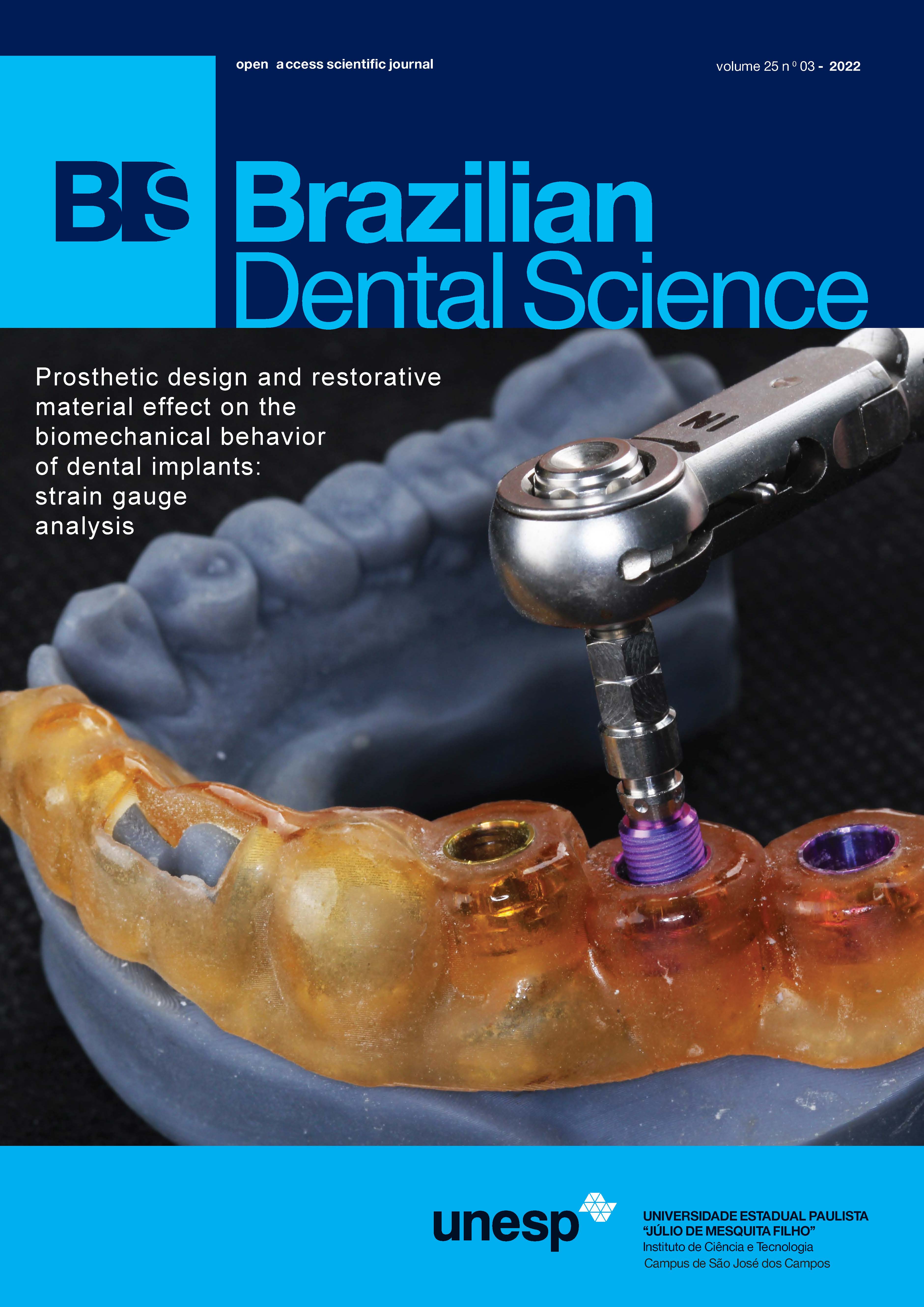Influence of the FDI criteria in the restorations’ evaluation and treatment decision in primary molars
DOI:
https://doi.org/10.4322/bds.2022.e2849Resumo
Objective: This study investigated the impact of FDI criteria for evaluating restorations on examiners’ decision-making compared with their previous personal judgment in primary teeth. Secondly, the possible factors related to changes when using the criteria, including the examiners’ experience were explored. Material and Methods: A cross-sectional study in a dental office setting was conducted selecting 27 resin composite restorations placed in primary molars in 11 children. Examinations of the restorations were performed by five undergraduate and five graduate dental students. First, the evaluations were performed based on personal judgment, and 2 weeks later, with FDI criteria. All examiners underwent training to use the FDI criteria after the first evaluation. The consensus of two benchmark examiners was considered to be the reference standard. Initially, a descriptive analysis was performed. Multiple Poisson regressions analyses were used to identify possible associated factors with outcomes - to be less or more invasive based on the FDI criteria than personal judgment. Results: The use of the FDI criteria changed the examiners’ decisions in approximately 15% of the cases. Irrespective of examiners’ experience, there was a trend of false results (compared to the reference examiners) when a change in the treatment decision was registered by using the FDI criteria. Examiners chose a less invasive option when assessing multi-surface restorations with FDI criteria (PR=2.04, 95%CI=1.03-4.05; p=0.04). Examiners who spent more time for evaluation with FDI criteria were more invasive (PR=1.001, 95%CI=1.0001-1.002; p=0.03). Students were more invasive with the FDI criteria when examined children with higher dmf-t (PR=1.16, 95%CI=1.01-1.32; p=0.03). Conclusion: The use of the FDI criteria negatively influenced the restorations’ evaluation and treatment decision in primary molars by undergraduate and graduate students.
KEYWORDS
Clinical decision-making; Tooth, deciduous; Dental restoration failure; Composite resins; Pediatric dentistry
Downloads
Downloads
Publicado
Como Citar
Edição
Seção
Licença
TRANSFERÊNCIA DE DIREITOS AUTORAIS E DECLARAÇÃO DE RESPONSABILIDADE
Toda a propriedade de direitos autorais do artigo "____________________________________________________________________" é transferido do autor(es) para a CIÊNCIA ODONTOLÓGICA BRASILEIRA, no caso do trabalho ser publicado. O artigo não foi publicado em outro lugar e não foi submetido simultaneamente para publicação em outra revista.
Vimos por meio deste, atestar que trabalho é original e não apresenta dados manipulados, fraude ou plágio. Fizemos contribuição científica significativa para o estudo e estamos cientes dos dados apresentados e de acordo com a versão final do artigo. Assumimos total responsabilidade pelos aspectos éticos do estudo.
Este texto deve ser impresso e assinado por todos os autores. A versão digitalizada deverá ser apresentada como arquivo suplementar durante o processo de submissão.




























